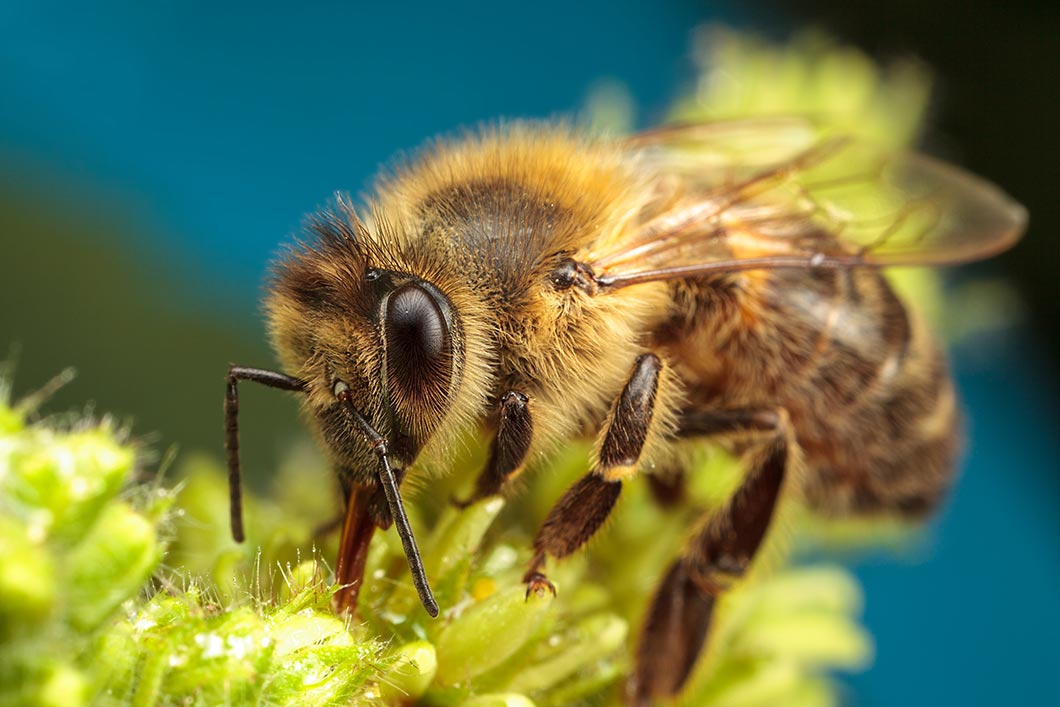Faculty
Savvy Scholar
Strictly Beeswax
In the Harvey Mudd Bee Lab, Assistant Professor of Biology Matina Donaldson-Matasci uses mathematical models and computer simulation to explore how communication shapes collective behavior among bees and other social animals.

“Bees don’t want to sting you,” she says. “Generally bees attack only when they feel the hive is threatened. In fact, most stings occur when bees are stepped on or caught in hair or clothing. Avoid using machinery that causes vibrations near a hive. If a bee flies near you, do not react suddenly or try to swat it. Move slowly and try to brush away the bee gently. If bees feel threatened, they will often warn you first.”
The apiary expert shares some useful tips for general bee safety.
Retreat immediately if:
- A bee buzzes loudly near your face.
- A bee flies directly into you and bounces off.
- A bee stings you—this will also leave a pheromone on you that attracts other bees to come and sting you as well.
If more than one bee attacks you, run. Although bees can fly fast, a healthy human can usually outrun them. Do not go underwater—they will wait for you to come up for air. Just get as far away from the hive as you can, as quickly as possible, and seek shelter if possible. Their goal is to chase you away.

If stung:
- Do not flail your arms or crush the bee. This may attract more bees.
- Remove the stinger as soon as possible by scraping (not squeezing), because while it is attached it can continue to pump venom inside of you.
If you have been stung more than 15 times, or if you know you are allergic to bees, seek emergency medical help immediately. Otherwise, inform someone that you have been stung, and then watch for signs of an allergic reaction such as rash, nausea or shock.